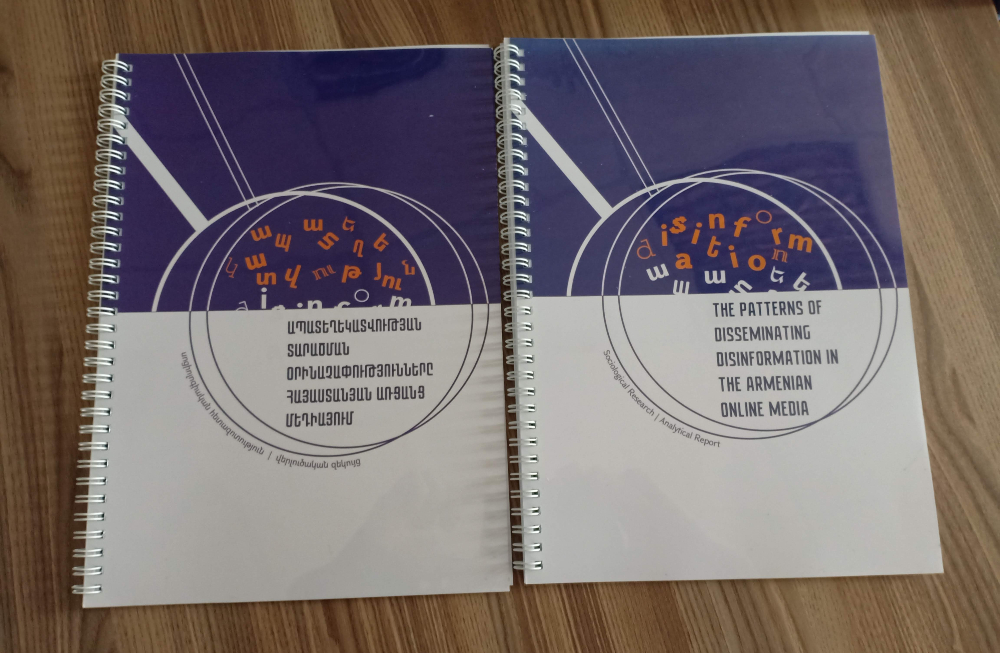
The mechanisms of dissemination of misinformation in the media mainly depend on the editorial policy of the media and often have similarities. The provision of information to the audience, as a rule, has at first glance invisible patterns.
In order to reveal such patterns, the Media Initiatives Center conducted a sociological survey “Patterns of Dissemination of Misinformation in Armenian Online Media.”
It summarizes online news between April-June 2020 as a result of monitoring three different news sites.
The research is an attempt to reveal the peculiarities and patterns of the formation and dissemination of misinformation in the Armenian online media, the framing of the information used in the coverage of various social and political events and the sometimes hidden, sometimes obvious messages.
The study was supposed to be published in October 2020, but the Artsakh war caused the need for editing, as a completely new geopolitical and internal political situation was created.
The war changed many things, including the attitude towards the media.
And now, by studying the research done before the war, we can outline the schemes by which the media have intertwined misinformation (or a certain amount of misinformation) with the news, and thus contribute to the condensation of the background of distrust.
The content of three news websites – News.am, Tert.am, 168.am – was the basis for the research “Patterns of dissemination of misinformation in Armenian online media.” Three topics were considered in the mentioned media: Coronavirus, the Karabakh issue and the Lanzarote Convention.
The results of the coverage of these topics became the basis for a mixed method of research when combining quantitative and qualitative analyses of content.
Two sociological methods of information collection were used: expert interviews and document research. The research was coordinated by Hayk Smbatyan.
The actual war and the situation after it are not reflected in this report. Nevertheless, it shows how the topic is presented to the public and how it is constructed, becoming a basis for the circulation of misinformation.
Summarizing the results of the research, we can come to several conclusions:
- Disinformation flows in the Armenian online media have significantly increased after the “Velvet Revolution.”
- To make the main patterns of misinformation visible, the following scheme can be used: the sender of information, the message of information and context of communication.
- Most of the observed news articles are not originally the author’s but are copied from the publications posted on social networks or other Armenian media and present the opinions and comments of third parties.
- According to quantitative data, the studied media outlets distribute more content than they create.
- The political framing of the topic of the coronavirus in the given media is a result of the domestic media discourse and does not penetrate from sources of foreign origin.
- The conspiratorial framing of the coronavirus narrative is mostly penetrated by websites of Russian origin.
- In most of the coverage of the Karabakh issue, the foreign policy pursued by the government is framed as “poor.”
- The narrative on the Lanzarote Convention largely frames the convention as sexually perverting children.
- The framings of the Karabakh issue and the Lanzarote Convention are part of the Armenian media narratives. Their sources are not of foreign origin.
In separate articles, you can get acquainted with the topical references in Media.am: The Karabakh issue, the Coronavirus (1, 2), the Lanzarote Istanbul Conventions.
Nune Hakhverdyan


Add new comment
Comments by Media.am readers become public after moderation. We urge our readers not to leave anonymous comments. It’s always nice to know with whom one is speaking.
We do not publish comments that contain profanities, non-normative lexicon, personal attacks or threats. We do not publish comments that spread hate.